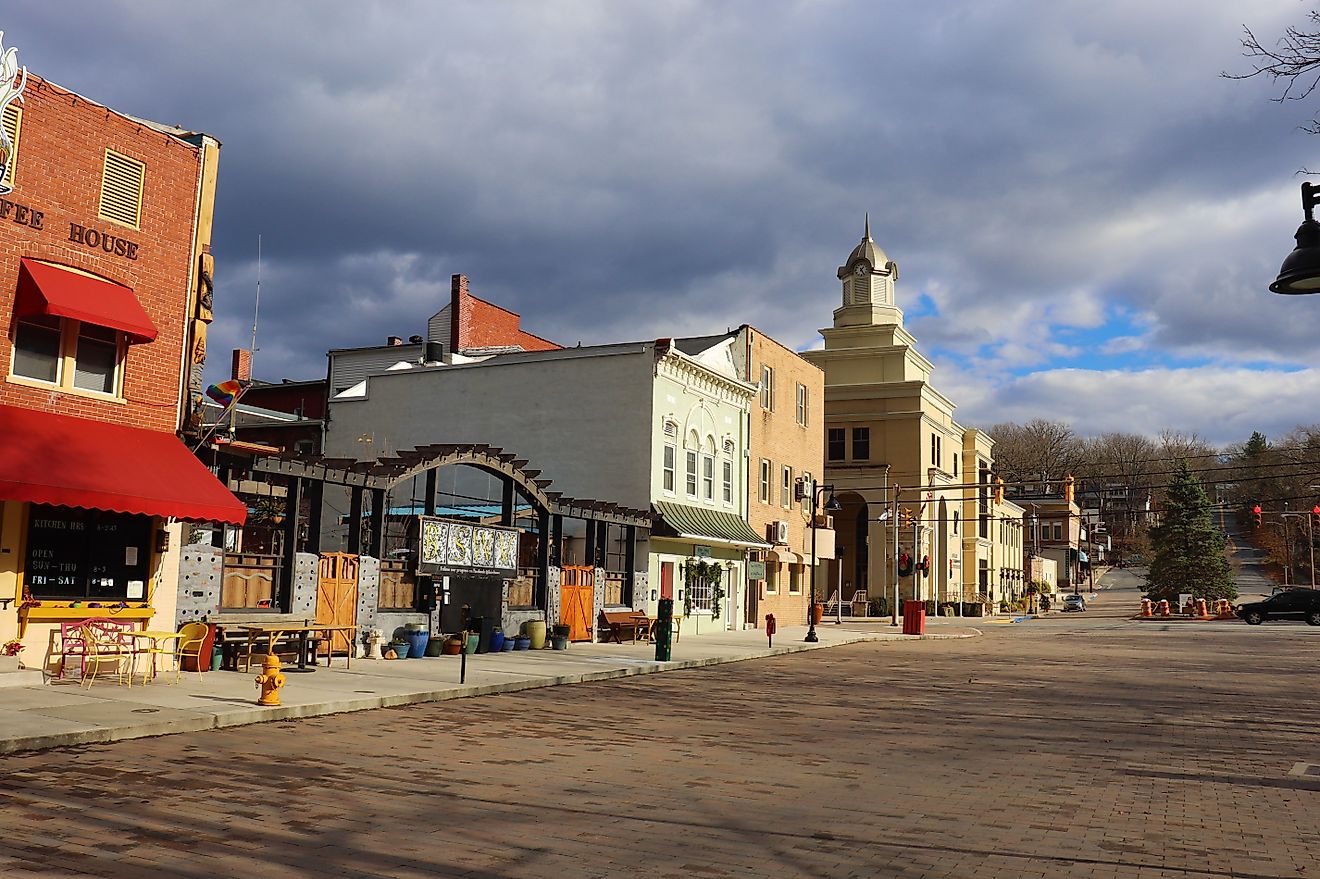
10 Largest Cities In Alabama
What do the longleaf pine and camellia have in common? These floras represent the Heart of Dixie, better known as Alabama. And if you aren’t familiar, Alabama is a big state situated in the southeastern portion of the United States. The Yellowhammer State can be easily located on a map, bordered by the neighboring states of Tennessee, Georgia, Florida, and Mississippi. Nationally, Alabama is the 30th largest state covering a surface area of 135,760 sq. km. Furthermore, the state showcases a unique topography, with the north being more mountainous while rolling grassland plains cover the west, southwest, and central portions. The estimated population was 5,039,877 in 2021, making Alabama the 24th largest state by the populace. From Huntsville to Decatur, here is everything you need to know about the largest cities in Alabama!
1. Huntsville – 221,986
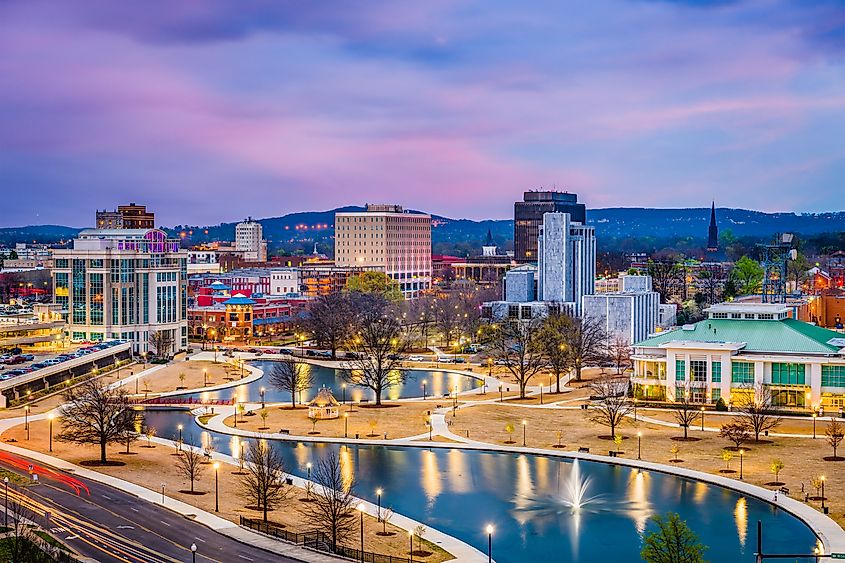
Nestled in the Appalachian region in northern Alabama is the majestic city of Huntsville, the state's most populous city. It encompasses parts of Madison, Limestone, and Morgan Counties but is the designated seat for Madison County; and a former capital city. Nicknamed "Rocket City," the Redstone Arsenal was erected here during World War II by the US Army. However, a significant population boom occurred after the war when the Redstone Arsenal turned to space exploration, focusing on rockets. This leap forward brought forth the NASA Marshall Space Flight Center, the United States Army Aviation and Missile Command, and even the FBI's operational support command center to the city. Huntsville continues to grow and, as of the most recent census, has a trajectory to expand by 1.60% annually.
2. Montgomery – 199,571

Montgomery is the state's second most populous city, located along the Alabama River in south-central Alabama. The city, the capital of the state, was at the forefront of the Civil Rights Movement in the 20th century, with some tumultuous events taking place and making headlines. It thus holds the nickname the "Birthplace of the Civil Rights Movement." Montgomery is an attractive place to work or study, housing some nationally recognized post-secondary institutions, and is home to the Maxwell-Gunter Air Force Base.
3. Birmingham – 198,433

Does the name Birmingham sound familiar? If so, that's because Alabama's third most populous city is named after the same named dwelling in England. Birmingham was consummated by dissolving smaller townships into one bigger one following the Civil War in 1871. Situated in north central Alabama, Birmingham is a significant economic hub that connects the Deep South, Piedmont, and Appalachian Mountain regions of the United States. So much so the coined term "Magic City," or "Pittsburgh of the South," refers to Birmingham's industrial impact. On this note, Birmingham houses a few Fortune 500 and Fortune 1000 companies, in addition to internationally recognized schools like the University of Alabama School of Medicine and School of Dentistry. However, with so much economic potential, Birmingham is facing a population decline with an approximate annual loss of 0.58%.
4. Mobile – 185,427
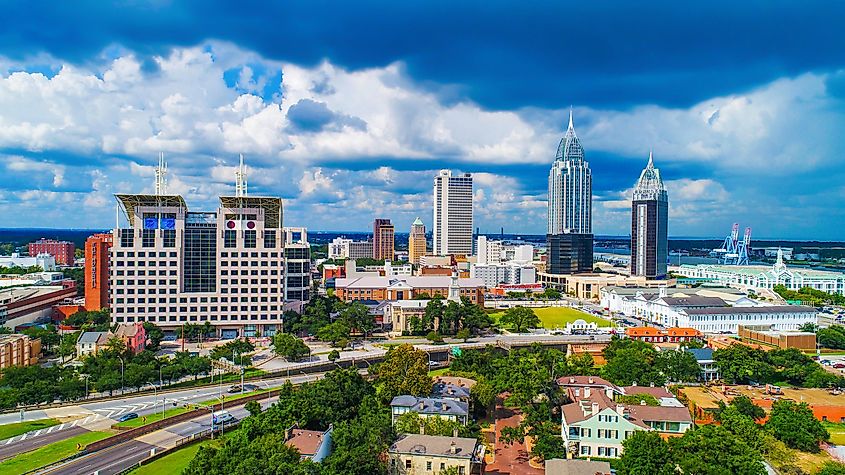
Placed on the banks of the sparkling Mobile River and at the northern tip of Mobile Bay is Alabama's only saltwater port and its fourth most populous city. Though Mobile's location is an enormous driver in its economy, a much-overlooked aspect of this large city is its exquisite arts, culture, and festival scene. If you find yourself along the Gulf Coast and searching for a cultural experience like no other, have a look at the local performances from orchestras, operas, and ballets, or visit the art galleries. And while all eyes are on Mardi Gras in New Orleans, a less crowded option is available in Mobile, which is home to a significant French Creole population. It may not be the biggest, but it is the oldest Mardi Gras celebration in the US and a point of the city's pride. However, like most of the largest cities on this list, Mobile is also seeing a population shrink and is currently set to lose 0.43% annually.
5. Tuscaloosa – 101,426

Tuscaloosa is situated at the meeting point of the Piedmont and the Coastal Plains along the Black Warrior River in the state's west-central portion. The Druid City is its other name and teases a unique feature of this city. Planted along the streets of downtown are water oaks that have been a characteristic of Tuscaloosa since the 1840s. Tuscaloosa also hosts the Druid City Arts Festival, just one of the many outdoor events amidst a bustling arts and culture stage. But given its large presence in west central Alabama, Tuscaloosa only has a population density of 620.83 people per sq. km, making it the state's fifth most populous city.
6. Hoover – 94,804
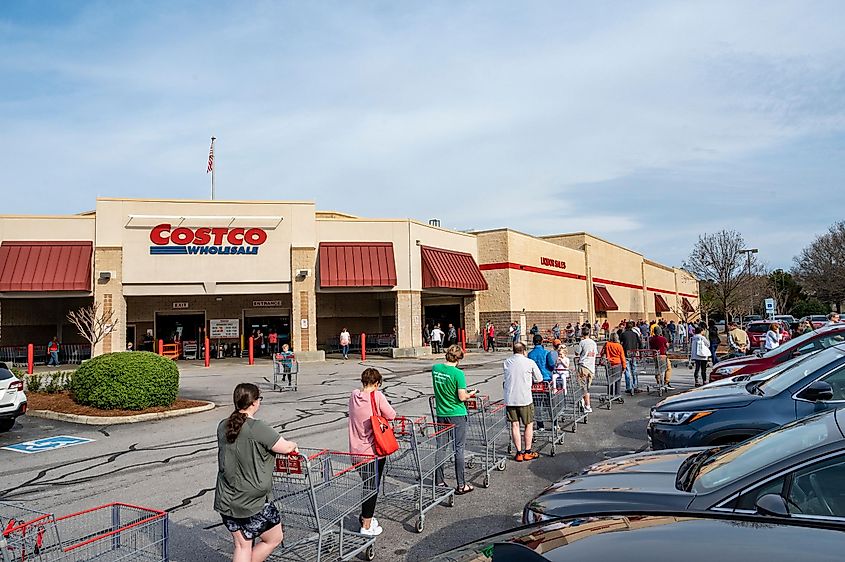
The first city to dip below the 100,00 mark, Hoover takes up the sixth spot on this list. A large suburban area in Jefferson and Shelby Counties, Hoover hugs the foothills of the Appalachian Mountains. Located directly south of Birmingham, tourism and retail therapy at the Riverchase Galleria serves as an enormous appeal to many who frequent Hoover. But the city's best-kept secret is the surrounding landscape that conceals some of the most enchantingly beautiful greenery. From scenic trails to trickling waterfalls and luscious golf courses, Hoover is an underrated destination for those who enjoy the outdoors. With limitless cosmopolitan activities found in one place, Hoover has seen a population influx and an annual growth of 1.17%.
7. Auburn – 80,695

Auburn is a big city situated in Lee County at the juncture of the Piedmont and Coastal Plains in the state's eastern portion. With a motto of "the loveliest village on the plains," Auburn is a college town set against an astonishing natural backdrop. Here the locals and visitors can visit several historical buildings including the coveted Auburn University, Noble Hall, and Scott-Yarbrough House, to name a few. However, it's the diverse geography that adds to the marvelous landscape all around. To the west and southwest, the savannahs and plains dominate, with the last of the Appalachian foothills emerging in Chewacla State Park in the south and thick forests to the north. All of this charm and epic scenery are just some of the factors that have aided Auburn in boosting its annual population by 2.90%.
8. Dothan – 72,188

Only a stone's skip away from Georgia and Florida, Alabama's eighth most populous city Dothan, is situated close to the state's southeastern corner. Dothan's vicinity has also boosted it to become a large commercial hub, with one crop, in particular, gripping its roots into the economy. Believe it or not, Dothan is a major producer of peanuts, making it the "Peanut Capital of the World!" And what better to celebrate the pride of this city than to shell out a celebration at the National Peanut Festival. Nevertheless, Dothan has been experiencing a year-over-year population increase of 0.78%.
9. Madison – 59,733

Almost engulfed by Huntsville on all sides, Madison is found in northern Alabama. Similar to Huntsville, the establishment of the Redstone Arsenal after World War II jumpstarted Madison’s economy, propelling this once small town to become the ninth-largest city in Alabama. Given the compact nature of the city, which spans over 78.96 sq. km, there is a population density of 724.17 people per sq. km. More so, its small land mass shouldn’t be a deterrence, as the city is increasing yearly by 2.40% and is among the wealthiest Alabama cities on average. The city lives up to its motto, “play hard, learn well, and live richly.”
10. Decatur – 58,390
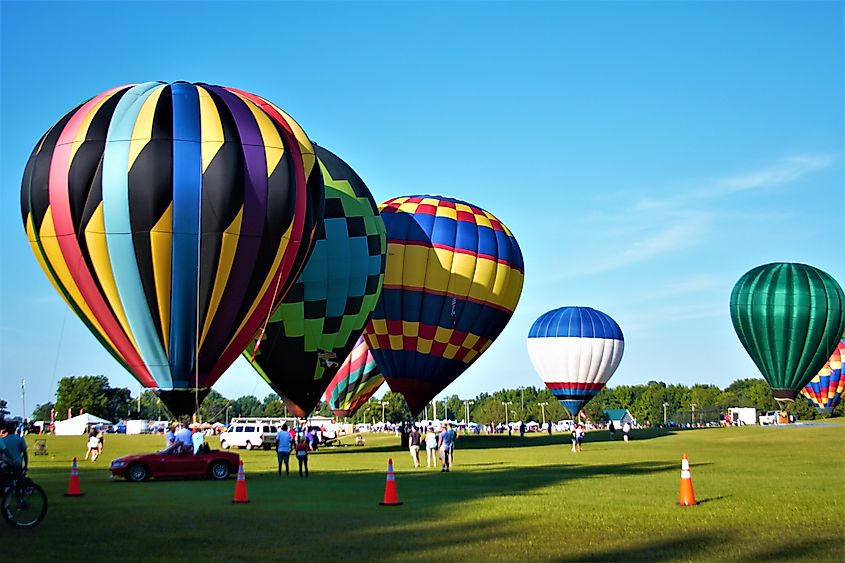
Finally, the last of the largest cities is Decatur in northern Alabama, residing in Morgan County. Occupying the banks of the dazzling Tennessee River and Wheeler Lake, Decatur found early success with boat and railroad traffic, which catapulted it as one of Alabama’s economic hubs. As a result, some Fortune 500 companies were lured to Decatur, which benefited from the ease of transporting goods out of the Port of Decatur. Meanwhile, the enchanting backdrop of the Tennessee River magnetizes tourists to the “River City” each year. One of the most beloved spectacles in Decatur is the Alabama Jubilee, which sees vibrant hot air balloons high up in the skies in an epic display. Decatur is also in the midst of a population increase, with an annual bump up of 0.39%.
Arts, culture, outdoor festivities, and southern charm are what lead many to discover Alabama. From gruesome wars and disputes, the space race, and booming economies that flourished from the water and rail logistics, these are some reasons why these large cities have bound themselves in success. Yet, even in the largest of these cities, there's peace to be found; from parks, rivers, and mountains, visitors and locals can find tranquility in the Cotton State.
30 Biggest Cities In Alabama
| Rank | City | Population |
|---|---|---|
| 1 | Huntsville | 221,986 |
| 2 | Montgomery | 199,571 |
| 3 | Birmingham | 198,433 |
| 4 | Mobile | 185,427 |
| 5 | Tuscaloosa | 101,426 |
| 6 | Hoover | 94,804 |
| 7 | Auburn | 80,695 |
| 8 | Dothan | 72,188 |
| 9 | Madison | 59,733 |
| 10 | Decatur | 58,390 |
| 11 | Florence | 40,356 |
| 12 | Vestavia Hills | 40,116 |
| 13 | Phenix City | 40,014 |
| 14 | Prattville | 38,545 |
| 15 | Alabaster | 33,870 |
| 16 | Gadsden | 33,363 |
| 17 | Northport | 32,685 |
| 18 | Opelika | 31,899 |
| 19 | Enterprise | 29,141 |
| 20 | Daphne | 28,640 |
| 21 | Trussville | 27,361 |
| 22 | Homewood | 26,664 |
| 23 | Athens | 26,108 |
| 24 | Bessemer | 25,731 |
| 25 | Pelham | 24,912 |
| 26 | Fairhope | 23,907 |
| 27 | Mountain Brook | 22,871 |
| 28 | Albertville | 22,632 |
| 29 | Oxford | 22,213 |
| 30 | Helena | 21,738 |
